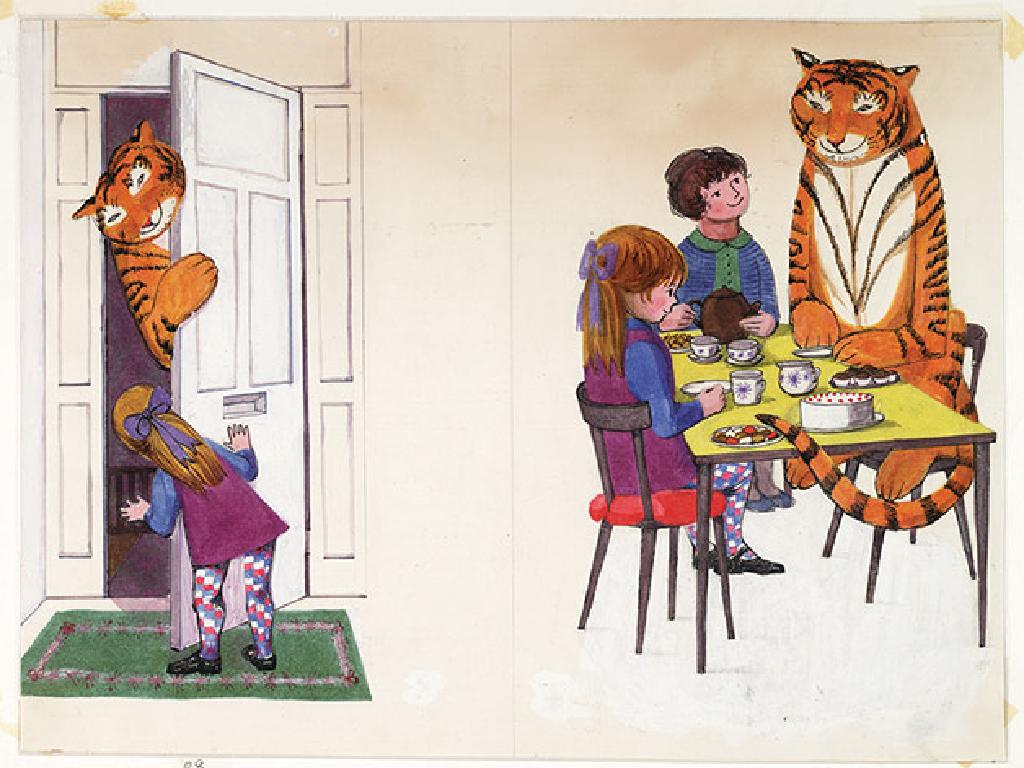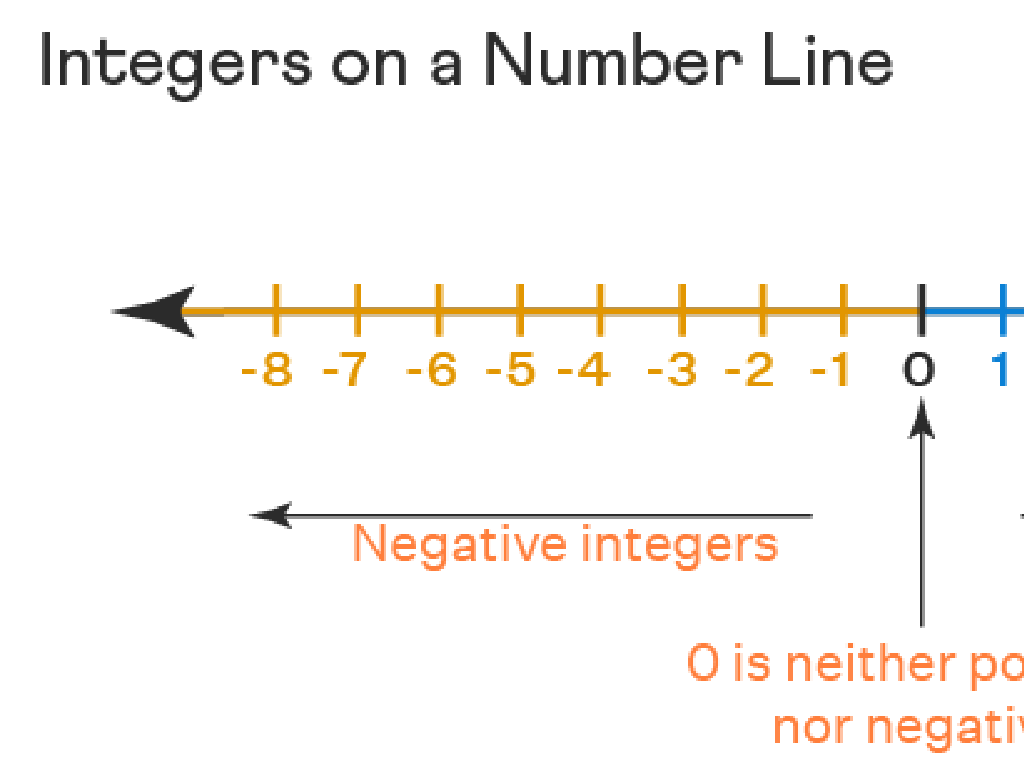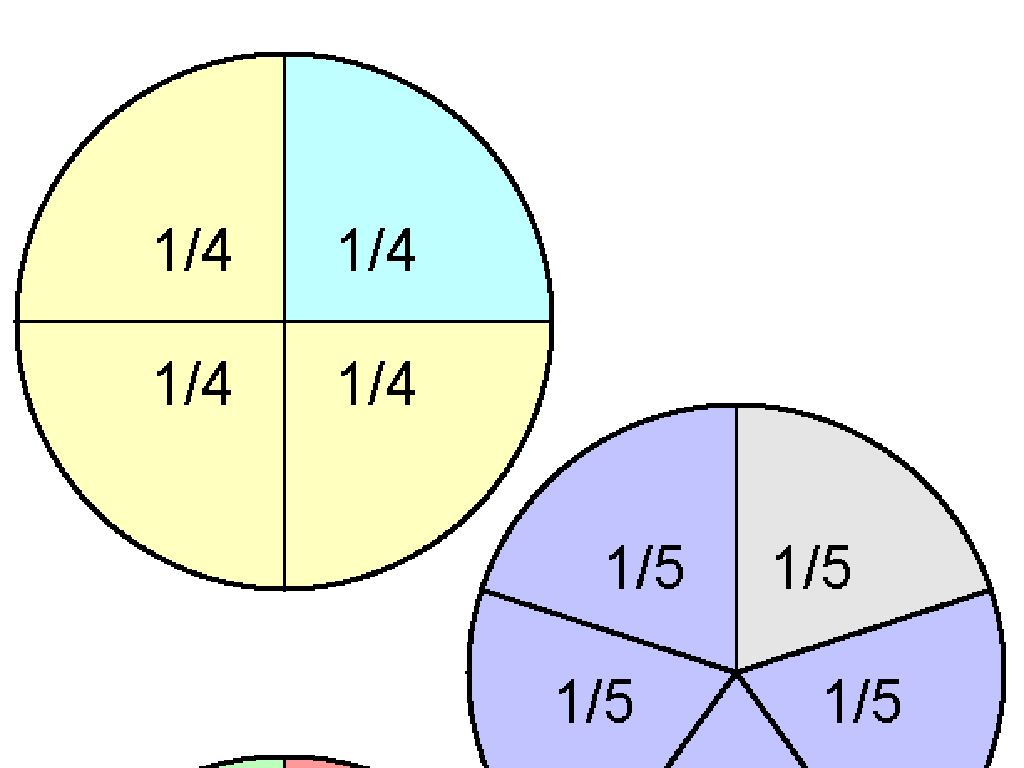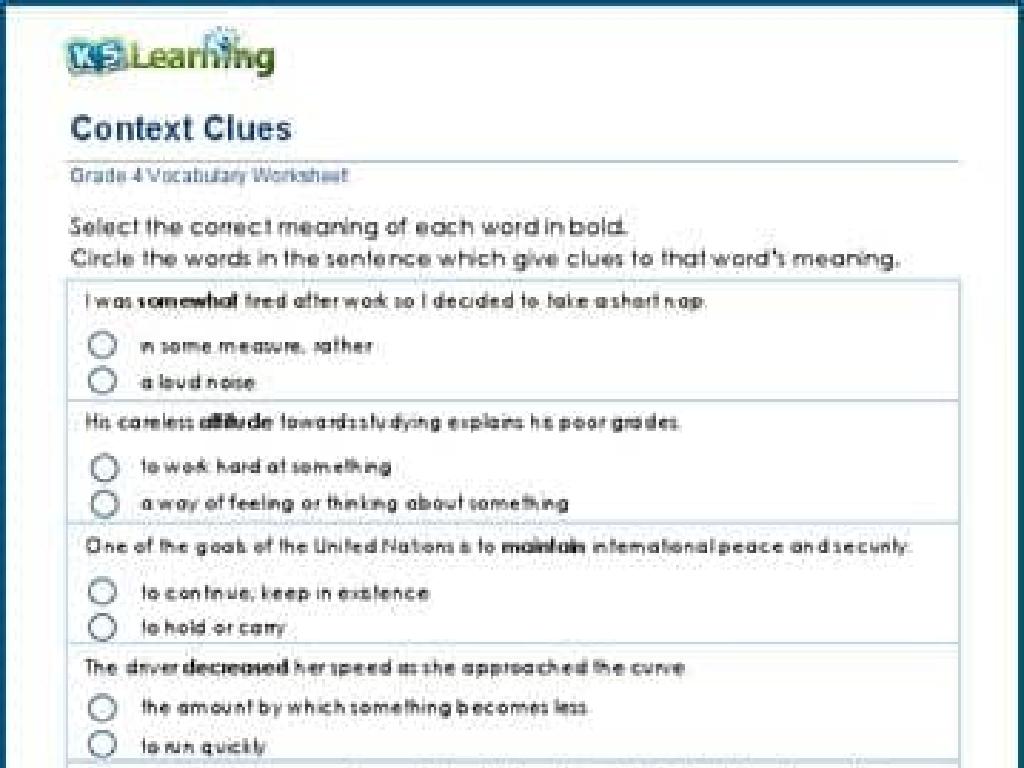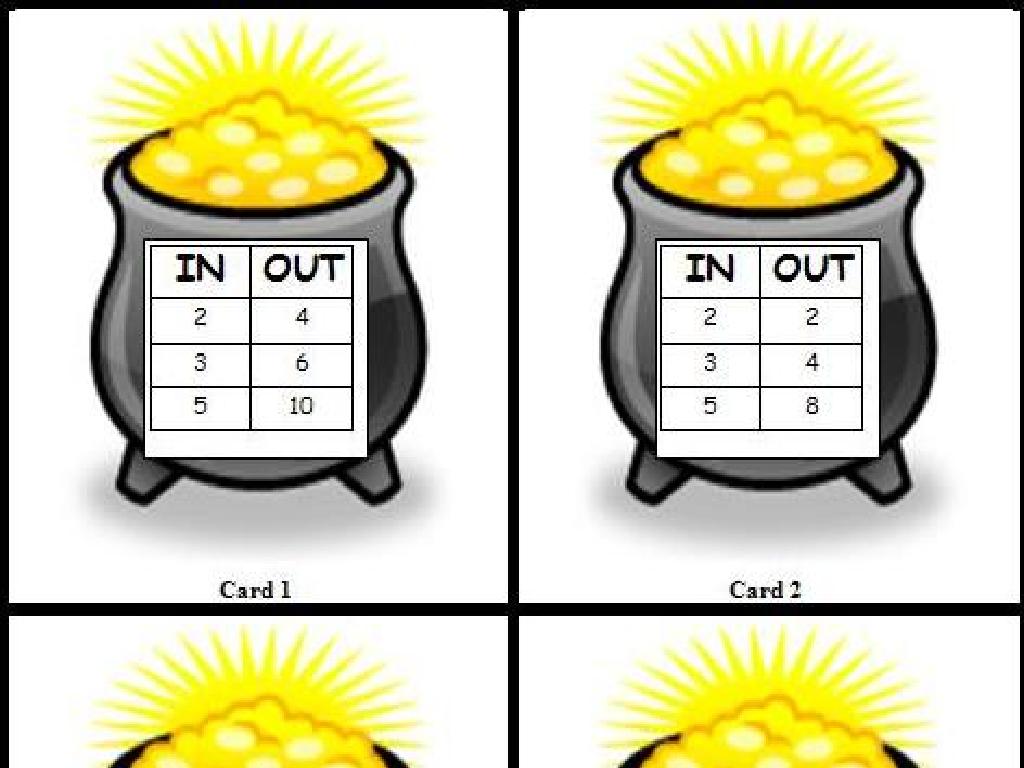Addition Sentences For Word Problems - One-Digit Plus Two-Digit Numbers
Subject: Math
Grade: First grade
Topic: Addition: Two Digits
Please LOG IN to download the presentation. Access is available to registered users only.
View More Content
Welcome to Addition!
– Learning to add numbers
– Solving word problems with addition
– We’ll read stories and find out how much things together.
– Adding one-digit and two-digit numbers
– Example: If you have 1 apple and you get 20 more, how many do you have now?
– Becoming addition experts by the end of class
|
This slide introduces the concept of addition to first graders in a fun and engaging way. Start by explaining that addition is a way of finding out how much you have in total when you put things together. Use simple and relatable word problems to demonstrate addition, such as combining apples or toys. Emphasize that by the end of the lesson, they will be able to add smaller numbers (one-digit) to bigger numbers (two-digit) confidently. Encourage participation by asking students to come up with their own items to add. Provide plenty of praise and positive reinforcement as they grasp the new concept.
Understanding Addition
– Addition combines numbers
– Adding creates a bigger number
– If you have 3 apples and get 2 more, now you have 5 apples.
– Use the plus sign (+) for adding
– Example: 1 toy + 2 toys = 3 toys
– Combining 1 toy car and 2 toy cars gives us 3 toy cars in total.
|
This slide introduces the basic concept of addition to first-grade students. Start by explaining that addition is like putting things together in a group and then counting how many items there are in total. Use simple, relatable examples such as toys or apples to illustrate the concept. Show them the plus sign (+) and explain that it’s a special symbol we use when we want to add numbers. For the example, use physical props like toy cars to demonstrate adding one toy car to two toy cars to make three toy cars. This visual and hands-on approach will help them understand the concept of addition more concretely.
Understanding Word Problems: Adding Numbers
– Word problems are number stories
– Read carefully to find numbers
– Find numbers in the story to solve
– Decide which numbers to add
– Choose numbers that make sense together
– Look for clues to help us add
– Words like ‘total’ or ‘together’ are hints
|
This slide introduces students to the concept of word problems in addition, emphasizing the importance of reading the problem carefully to identify the numbers involved and the action required (in this case, addition). Encourage students to look for keywords or phrases that indicate addition, such as ‘in all,’ ‘altogether,’ or ‘combined.’ Use simple, relatable stories to illustrate the concept, such as combining two groups of objects. Remind them that understanding the story is key to solving the problem. Practice with examples where they have to pick out relevant numbers and add them to find the solution. Reinforce the idea that math is not just numbers but can be part of a story that we can solve by understanding and finding clues.
Adding Apples: Tom’s Story
– Start with Tom’s 2 apples
– Add 10 apples from Mom
– Count all apples together
– Use fingers or objects to count
– Find the total number of apples
– 2 apples plus 10 more makes 12 apples
|
This slide introduces students to addition word problems involving one-digit and two-digit numbers. Begin by reading the story about Tom and his apples to make the problem relatable. Explain that we can find out how many apples Tom has in total by adding the number he starts with to the number his mom gives him. Use visual aids like actual apples or counters to help students count. Encourage them to use their fingers if they’re comfortable with that method. After adding, guide them to the correct total of 12 apples. Reinforce the concept by asking students to come up with similar stories or problems involving addition of one-digit and two-digit numbers.
Let’s Practice Adding!
– Time to try addition yourself!
– Find numbers in the story problem
– Look for clues in the words for numbers to add
– Use fingers or tools to add
– Counting on fingers, using blocks, or a number line can help
– Add one-digit to two-digit numbers
– Practice with examples like 7 + 15 or 6 + 22
|
This slide is designed to encourage active participation from the students in learning addition. It’s important to remind them to identify the numbers involved in the word problems and use tangible methods like fingers, number blocks, or a number line to visualize the addition process. Provide examples of one-digit plus two-digit numbers to add, and ensure they understand the concept of carrying over if the sum exceeds 10. During the activity, walk around the classroom to assist any student who needs help and to ensure that they are using the tools effectively. Offer praise for effort and correct answers to build confidence.
Adding with a Number Line
– Number lines show addition
– Start at the first number
– Begin at number 2 on the line
– Take steps to add the second
– Count 10 steps forward from 2
– Example: 2 + 10 on a number line
– Visualize: 2, then hop 10 steps to reach 12
|
This slide introduces the concept of using a number line to visualize addition, which is particularly helpful for first graders. Explain that a number line is a straight line with numbers placed at equal distances apart. When adding, we start at the first number and ‘hop’ forward as many steps as the second number indicates. Use the example provided to show how starting at 2 and taking 10 steps forward lands us at 12. This visual and physical representation of addition helps students grasp the concept of adding one-digit to two-digit numbers. Encourage students to draw their own number lines and use them to solve addition problems. This method also reinforces counting skills and number recognition.
Class Activity: Creating Addition Stories
– Create your own addition story
– Use one-digit and two-digit numbers
– Share with a classmate
– Solve the story problem together
|
This activity is designed to encourage creativity and collaboration among students while practicing addition with one-digit and two-digit numbers. Students should be encouraged to think of simple, relatable scenarios where addition is required, such as combining groups of objects or adding prices of items. After creating their stories, they will pair up with a classmate to share and work through the addition problem presented in their story. For the teacher: Prepare to assist with forming pairs and guiding them through the process. Possible activities could include adding the number of apples on two trees, combining the scores of two players in a game, or totaling the number of pets in two households. Ensure that each pair has a chance to present their story and solution to the class.
Review and Goodbye!
– Excellent work on addition today!
– Addition means combining numbers.
– When we add, we combine two amounts to find the total.
– Practice makes perfect.
– Try adding with toys or snacks.
– Share your stories with family!
– Tell addition stories using your toys or during playtime.
|
Today’s lesson was focused on understanding the concept of addition, specifically one-digit plus two-digit numbers. Reinforce the idea that addition is about combining numbers to find a total. Encourage the students to continue practicing at home using real-life objects like toys or snacks to create their own addition stories. This will help solidify their understanding and make learning fun. Remind them to share these stories with their family to show what they’ve learned. Great job today, and keep up the good work!

